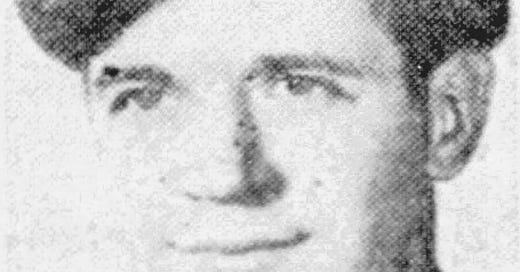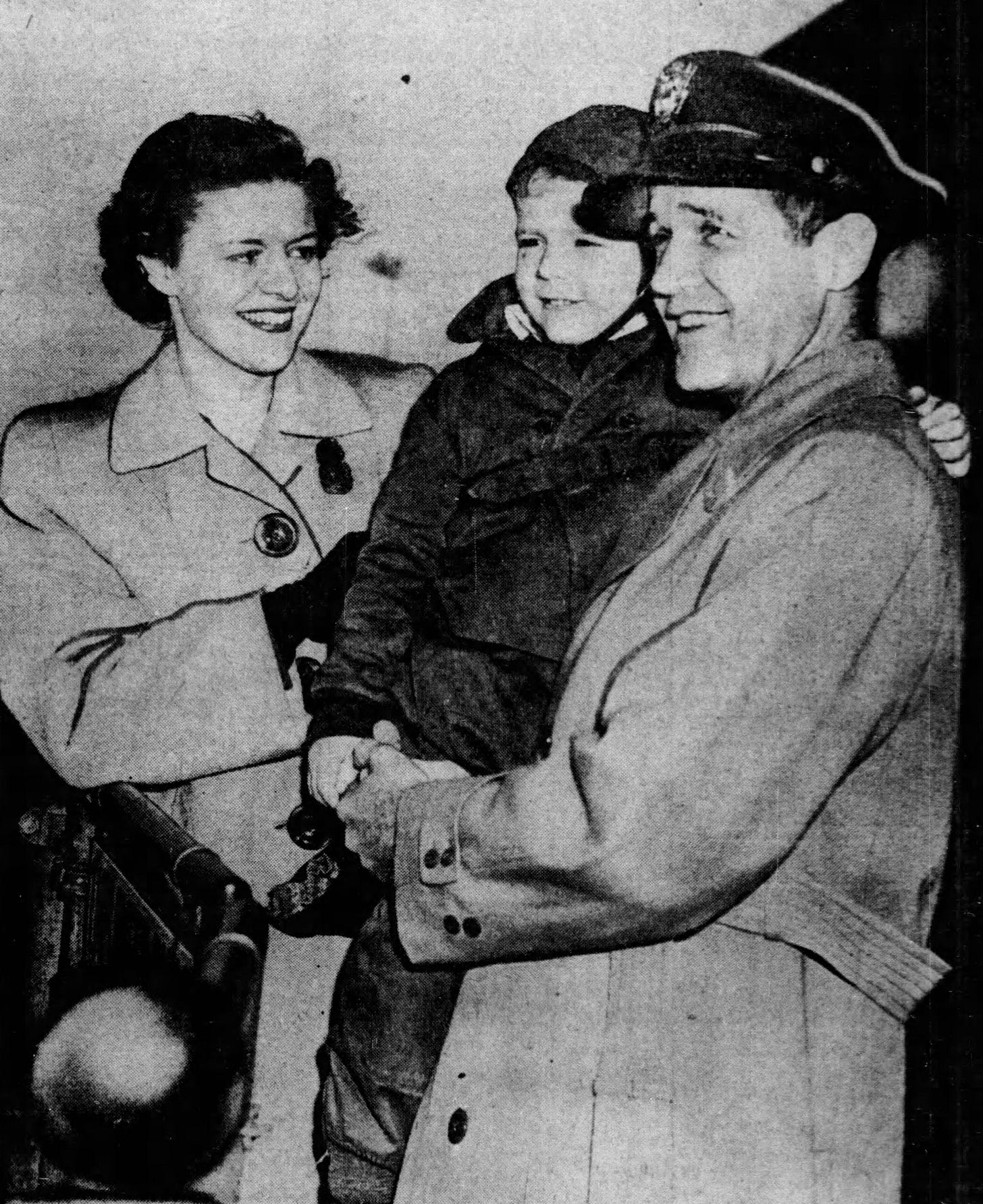Robert Cromie, the Chicago Tribune's man for all theaters
Robert Cromie covered World War II from the Pacific to Europe and back again, reporting for the Chicago Tribune from Guadalcanal to Japan’s surrender, with the liberation of Paris and the Battle of the Bulge in between.
Born in Detroit on Feb. 28, 1909, Cromie joined the Tribune staff in 1936. He shipped out to Hawaii in July 1942 and began a three-year tour of the world’s battlefields that fall. His first dispatch from Guadalcanal, filed Oct. 11, was indicative of his colorful, descriptive style. It began:
Upon your first view from the air, this is a lovely and peaceful island, drowsing in the sun, with cows grazing in green meadows, coconut palms nodding to and fro, and swimmers sporting in the winding river.
Then the pilot mentions that he is making a wide swing out from shore, on account of Japanese guns, and you suddenly notice hundreds of foxholes, bomb craters here and there, and many wrecked planes near the prized airfield which the Americans captured from the Japanese.
Cromie would soon become fully accustomed to the sights, sounds and smells of war. He reported from every corner of the Southwest Pacific for more than a year before returning home to spend time with his family three days before Christmas in 1943.
After several weeks at home, which included numerous speaking engagements in which he discussed his experience in the Pacific, Cromie sailed for England in February 1944. As he awaited the invasion he and everyone else was anticipating, he spent most of his time writing about the air war.
That led to a memorable story on the front page of the May 22 Tribune in which Cromie recounted how “two steel-nerved Chicago flyers” brought a B-26 to a safe landing in England after the bomber’s rudder and most of its left elevator had been blown off by German flak on a bombing raid over France.
“I can tell you something of their skill and calmness — a calmness which they managed to infuse into the balance of the crew — because I was in that plane,” Cromie wrote.
At one point, when it appeared the men might have to bail out of the wounded Marauder, Cromie asked the bombardier-navigator how hard he would have to pull the parachute cord to get it to deploy properly.
“I don’t know,” he said. “I’ve never tried one.”
One of the flak hits had wounded the tail gunner, and his crewmates patched him up and moved him forward in the plane, where he lay on the floor with Cromie watching over him.
At last I spotted the English coast. In my notes I see that I’ve written “Across the channel.”
“Whew!” I told the tail gunner, who nodded weakly and requested a cigaret. He sat there taking rare puffs between bloody lips adorned with a scraggly mustache that he was still too young to grow properly.
Just as they were about to run out of gas, the pilot, Lt. Col. John S. Samuel, all but crash-landed the bomber at an RAF airfield. The wounded man was removed to an ambulance, and Cromie had himself quite a story.
It would end up winning him a $500 prize after being selected as the Tribune’s best foreign story of the year.
On June 6, Cromie was aboard an LST off the Normandy coast. He wouldn’t begin reporting from the continent until mid-July, but when he arrived he was there for the long haul.
Now attached to Gen. George S. Patton’s Third Army, he accompanied U.S. troops into Paris on liberation day and remained with them into October. After a month away, he rejoined Patton’s men and was with them when the Germans launched their counteroffensive in the Ardennes.
He entered Bastogne on Dec. 28 and crossed the Rhine at Remagen nearly three months later, writing on March 25:
While German forces east of the Rhine river are fleeing in panic tonight before 3rd Army tanks and infantry, the whole attitude of the American forces is one of eager expectancy, peculiarly like that which prevailed just before Paris fell. Optimists — including most members of the press camp — are openly declaring the war is over and that only large scale mopping up remains. Even the pessimists admit the Nazis can’t hold out more than a matter of weeks at the most.
A little over a month later, the fighting in Europe was indeed finished, though Cromie was already on his way back home by then. V-E Day came while his ship was in the middle of its 11-day voyage from Southampton to New York.
His war wasn’t finished just yet, though. Cromie headed back to the Pacific and arrived in Manila in mid-July. After reporting from the Philippines, Borneo, Okinawa and elsewhere, he arrived in Tokyo on Aug. 30 and had the lead story in the following day’s Tribune, describing the sights he saw in a driving tour of the vanquished capital.
He ends with a brief visit to the Imperial hotel, where the assistant manager answered a few questions and bid the correspondents farewell.
“When we left he said, graciously, ‘We will look forward to seeing you again,’” Cromie wrote.
Cromie would return to Manila and stay through December, mostly covering stories about Japanese war crimes against civilians and prisoners of war, before finally returning home.
He would eventually move to the sports department and later become a columnist, but he was best known later in his career for his work as the Tribune’s book editor and his syndicated national radio and local television shows about books. He also wrote a few himself, including histories of the Great Chicago Fire and John Dillinger.
Cromie died at his home north of Chicago in 1999. He was 90 years old.





